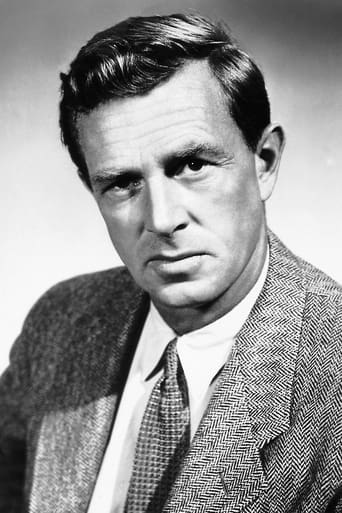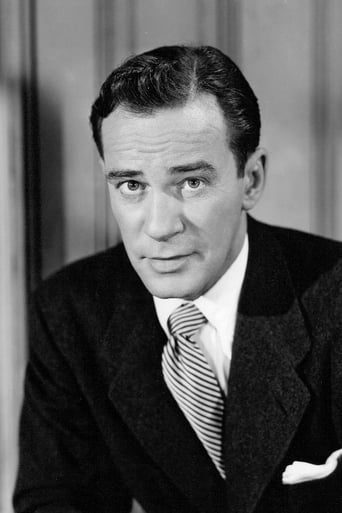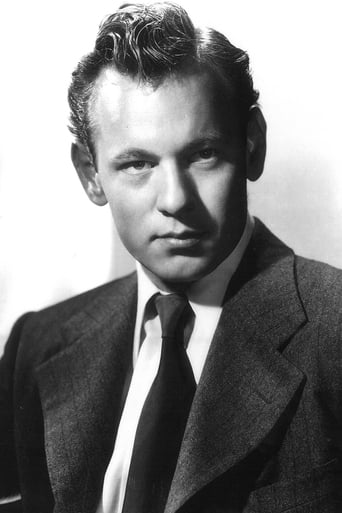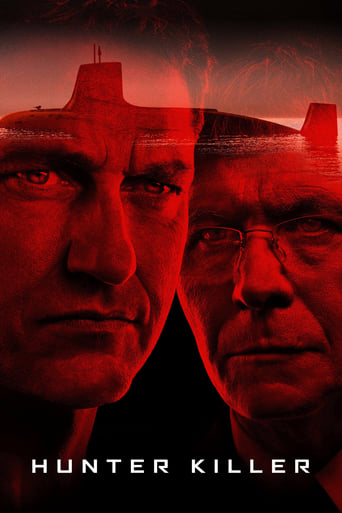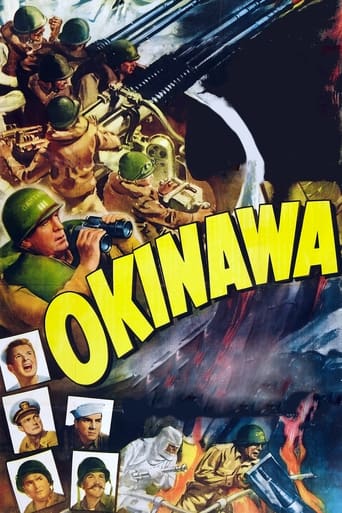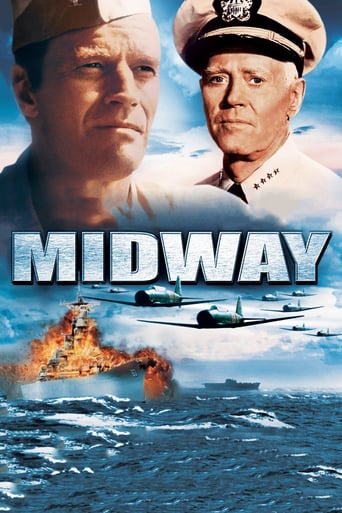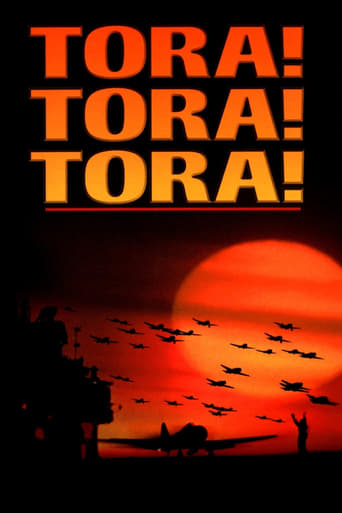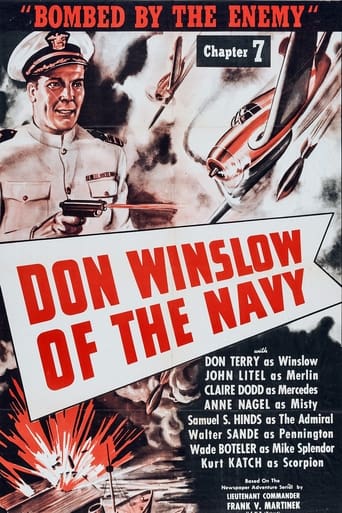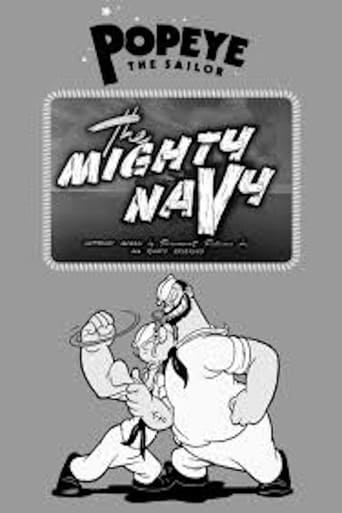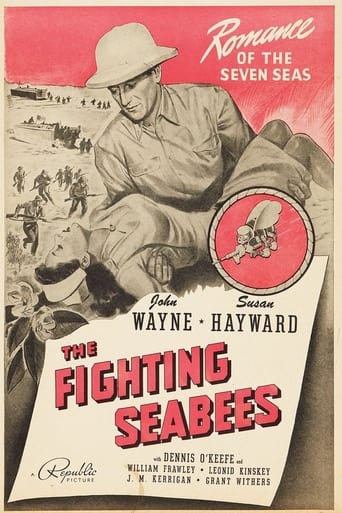

Flat Top (1952)
A rock hard commander trains Navy Carrier Pilots during the Second World War
Watch Trailer
Cast
Similar titles
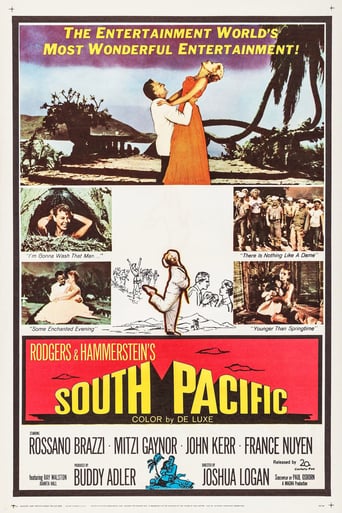

Reviews
Powerful
I don't have all the words right now but this film is a work of art.
Admirable film.
The film makes a home in your brain and the only cure is to see it again.
While other reviewers rush to relegate this movie to B-movie status and criticize its then-characteristic (for 1952) sloppy use of stock footage, I expect to be watching this movie again from time to time. This is truly one of those they don't make anymore. The point no one else on here seems to have noticed is the 1950's era docudrama undertone it has that you typically won't see in the more story-focused A-list movie, and how much that quality adds to this movie. It might easily have been subtitled (with a drum roll), "Your United States Navy Aircraft Carrier In World War Two, And Today" ("Hand, SALUTE!"). While the plot and characterizations are thin, shopworn, cliched, and not particularly realistic bits of trite melodrama (there is some really classic corn here; and could the ever-stolid Sterling Hayden playing a hero ever do anything else?), the real story here is to give you some sense, however light, of aircraft carrier operations in the last year to year-year-and-a-half of the war, and in this it could be worse. The plot commences by introducing the squadron members, with the evident aim of showing the slice of American life represented by the new pilots deploying for their first combat roles. From there it moves to a treatment (albeit, very light-weight) of operations and life aboard (including, significantly, the sometimes ample downtime these guys could experience, ranging from card games to the inevitable mail-call; it makes the point that life on board a ship is most often more than just eat-sleep-fight-repeat). The light losses the ship and squadron experience are also believable for this period, since the vast majority of Japan's most skilled pilots had by then been killed in previous battles, most notably in the loss of no less than four big-deck carrier loads of their best naval aircrew at the Battle of Midway back in 1942, followed by their losses in the Solomon Islands beginning later that year and in 1943. Unlike the United States, Japan did not devote sufficient resources to training new pilots for combat, so that by the time our heroes in this movie show up, the average Japanese pilot was lucky to be able to take off and eventually make it back to safely land at his home field without injuring himself, with the question of being effective in air combat against a decently-trained and well-equipped enemy being something they could not begin to answer adequately. (Indeed, it was this aspect of Japanese military aviation which contributed to the adoption of "Kamikaze" tactics about the time this movie takes place; it was far easier in time, effort, and increasingly-scarce aviation fuel to teach a raw recruit how to take off and fly someplace, and then crash himself into something, than to make a real pilot out of him. With Kamikaze tactics not only did you not need to teach a guy how to fight his airplane, you didn't even need to teach him how to find his way home, and then land. To the contrary, such training would actually make him a less motivated Kamikaze, because he might then decide he had an option to crashing his plane against an American target, to his immediate and irrevocable death.) This state of affairs also explains the incredible toll of Japanese aircraft in the "Marianas Turkey Shoot", also depicted in the film, where hundreds of Japanese planes were shot down in a single day, losses which in normal World War II air battles would have been more like ten times less even on the worst of days. Best of all is the use of all the genuine stock footage seen in this movie. While the casual cutting turns the film into a veritable continuity error festival, to plane-spotters that is all the better, because you get to see just about every American naval combat aircraft in the inventory at one point or another, in actual wartime operations and better still, in color. While many of the clips used have been used repeatedly over the ensuing decades in television, movies, and innumerable documentaries, until recent years they had been copied over (and over again) in black and white, and to see all these color originals must have been very unusual and a special treat back in 1952. (At this point it might be worth mentioning that the use of F4U Corsairs in this movie is a significant anachronism. The Navy never deployed this kind of plane on carriers before Okinawa in 1945; surely the reason you see them in this movie is that by 1951 when it was shot, they would have been the last propeller-driven World War Two fighter aircraft the Navy still used, and so to get fresh, exciting, cinematic-quality footage of flight deck operations they would have to be substituted for the F6F Hellcats these pilots would have really flown in 1944 and before Okinawa in 1945, at a minimum. This is also the reason why all the rear-projection shots of squadron members in flight show F6F's in the background, a cinematic mixing of metaphors if there ever was one.) Anyway, for these qualities I give this movie a seven out of ten; its plodding plot and characters are balanced out by getting a glimpse, however Hollywoodized, of carrier onboard life in the latter part of the war and post-war periods.
A story of a green squadron on a US carrier in the Pacific in 1944. When they land on the USS Princetown, they find their new CO is a cold, tough as oak, stickler for the book. The CO also delivers his lines as though he's made of oak. There is plenty of good flying action. I also liked the historical footage of battleships conducting shore bombardment. The plot is leaky and the squadrons' planes morph from Corsairs, to Hellcats and even to Helldivers. It is all pretty predictable and the characters are hard to feel attached to. But I think the hardest thing to stomach is the levity displayed by the US pilots when they are killing people. It's a war people, not a football game.Das Boot, Enemy at the gates or even Tora Tora Tora are a much better bet for your evening battle flick.
Flat Top is a run of the mill war film with an old plot device about a conflict between the group captain and the executive officer on how to command. But considering this came from Monogram Pictures which was transitioning to Allied Artists, for what product normally came from that studio this could have been Gone With The Wind.Monogram even sprung for color and utilized some real combat footage from the Battle of Leyte Gulf. The stars are Sterling Hayden and Richard Carlson as the skipper and his number 2. It's the usual story, the tough new skipper and the executive officer who is loved by the men under him. Both these guys and the cast beneath fill their roles out well.Giving as a high a rating as I do for a Monogram Picture believe me it's worth your while to give this one a look.
This is a rather run-of-the-mill War movie on board an American flat top in the Pacific against the Japs. Definitely not in the class of "A wing and a prayer" or "Tora, Tora, Tora" and, without much background footage, even not up to the mediocre Midway. Education under fire with an as always impressing Sterling Hayden, not much else. Definitely a B-Movie under war movies issued during this area. Consumer commodity stuff not, if you want action, look at the above mentioned movies, if you want it along with history, choose Victory at Sea. Five out of Ten at best for the dogfight at the very end. Actually difficult to crunch out ten lines for this, isn't it.
